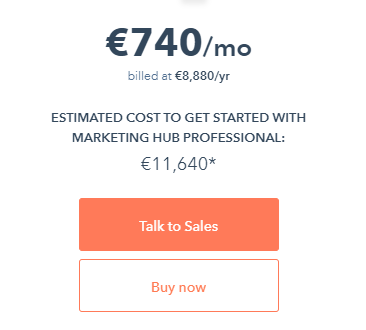Rapid growth: beware of the boomerang effect
In partnership with Emerce - Disrupting a market. Becoming the next Airbnb. Growing as fast as Mollie. Dutch scale-ups are more ambitious than ever before and see the whole world as their potential customer. Yet the path to that global success is littered with bumps, one of which is often underexposed: your ability to connect all the customer data. At Mollie, they have since solved that problem.
Let's briefly outline a situation similar to many high-growth technology companies. After the first round of funding is successfully completed, the founders can start investing. And so they do. A sales department is set up, the marketing department grows from two to about ten people, and customer service is also professionalized.
New tools
In the wake of that staff expansion, the company is shuffling in a small army of new tools in no time. Which brand is on the label is, in many cases, the result of a manager's personal preference. For example, sales is getting an application to easily track new leads and marketers no longer rely solely on Analytics and Excel. There will be a separate content management system for the new website. All meant to shift into third or even already fourth gear. Fast, faster, fastest is the credo.
It creaks in the organization
But - and here's the thing - almost always within two years of such a first round of professionalization, things start creaking in the organization. What starts with a little squeak automatically becomes a big crack. This is because all those different tools, which were previously ushered in with great enthusiasm, turn out to be barely in tune with each other. At sales, for example, they can't see when their customer was last in contact with customer service. Marketers are also complaining, because they are unable to integrate website data from the content management system into the tool with which they work on a daily basis. No one in the company seems able to connect the growing amount of customer data coming in from different places in an easy way.
Steering by KPIs
One place where this lack is also making itself felt is in communication with investors. Every scale-up reports regularly to the people who acquired a pick of the shares in exchange for funding. They have many questions. What the Customer Life Value is, to take one example. That's how much money a customer is going to spend on the company. They also want to know how often an average customer returns to the platform or shop. The data needed to tell that is floating somewhere in the organization, but no one who has a good view of it. No one who can access it.
Strategic choices
So what is actually going on here? In the earlier round of professionalization, the founders did not give enough thought to the strategic implications of their decisions. The speed with which new tools were chosen comes back like a boomerang and actually hinders further growth. Suppose you are now a scale-up with ambitions to disrupt a market, become the next Airbnb or grow as fast as Mollie.
Then you would be wise to think carefully about the tooling that the various departments will be using at a much earlier stage of your growth. Ask yourself at least the following 5 questions
- Can we use it to easily link all customer data and have central insight?
- Can we use it to steer on KPIs?
- Can we use it to create reports?
- Will it allow us to continue to grow when we are 10 times bigger?
- Does it allow us to keep costs under control?
This is how Mollie does it
The right tooling is not the holy grail for the success of your business. There are numerous other aspects that are important for that. But a well-functioning system that links all the data together can take away some of your growing pains to a large extent. They experienced this at Mollie, the payment provider that managed to reach the magical status of Unicorn last year. The company chose HubSpot's platform-based ecosystem, which means customer data now flows much more easily through the organization. For example, Hoang Pham, Head of Growth at Mollie wrote of HubSpot, "This means that not every department has to purchase HubSpot, but can use links to existing systems. That aspect was very important to us".
Easy upgrades
In addition, HubSpot has a reporting tool that makes it very easy to build custom dashboards. This, according to Mollie, allows for better forecasting and tighter processes that allow sales teams to use the tool effectively. It gives the entire team access to the sales insights needed to further grow Mollie. Additionally, the platform allows Mollie to easily scale up. They can upgrade HubSpot with specific features applicable to them at any time.
So every reason to take a long-term view when it comes to tooling in a timely manner. You will need to make the right strategic choices as a scale-up. That way, your website will become a lead generator, your sales department will achieve more results with less hassle, and marketers' work will be a lot more enjoyable.

Want to get the most out of HubSpot? Subscribe to our newsletter, follow us on LinkedIn, or attend our HubSpot User Days!
Explore HubSpot User DaysShare this
You May Also Like
These Related Stories

Leave these 7 HubSpot Myths behind in 2021

HubSpot Onboarding: onboarding through HubSpot itself or a partner?

